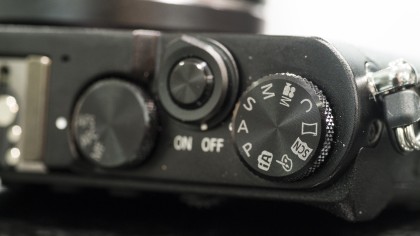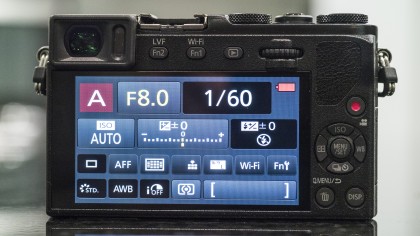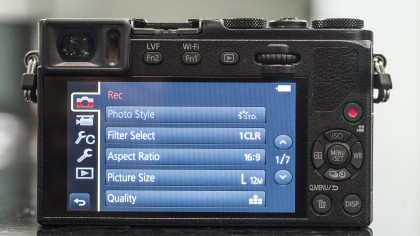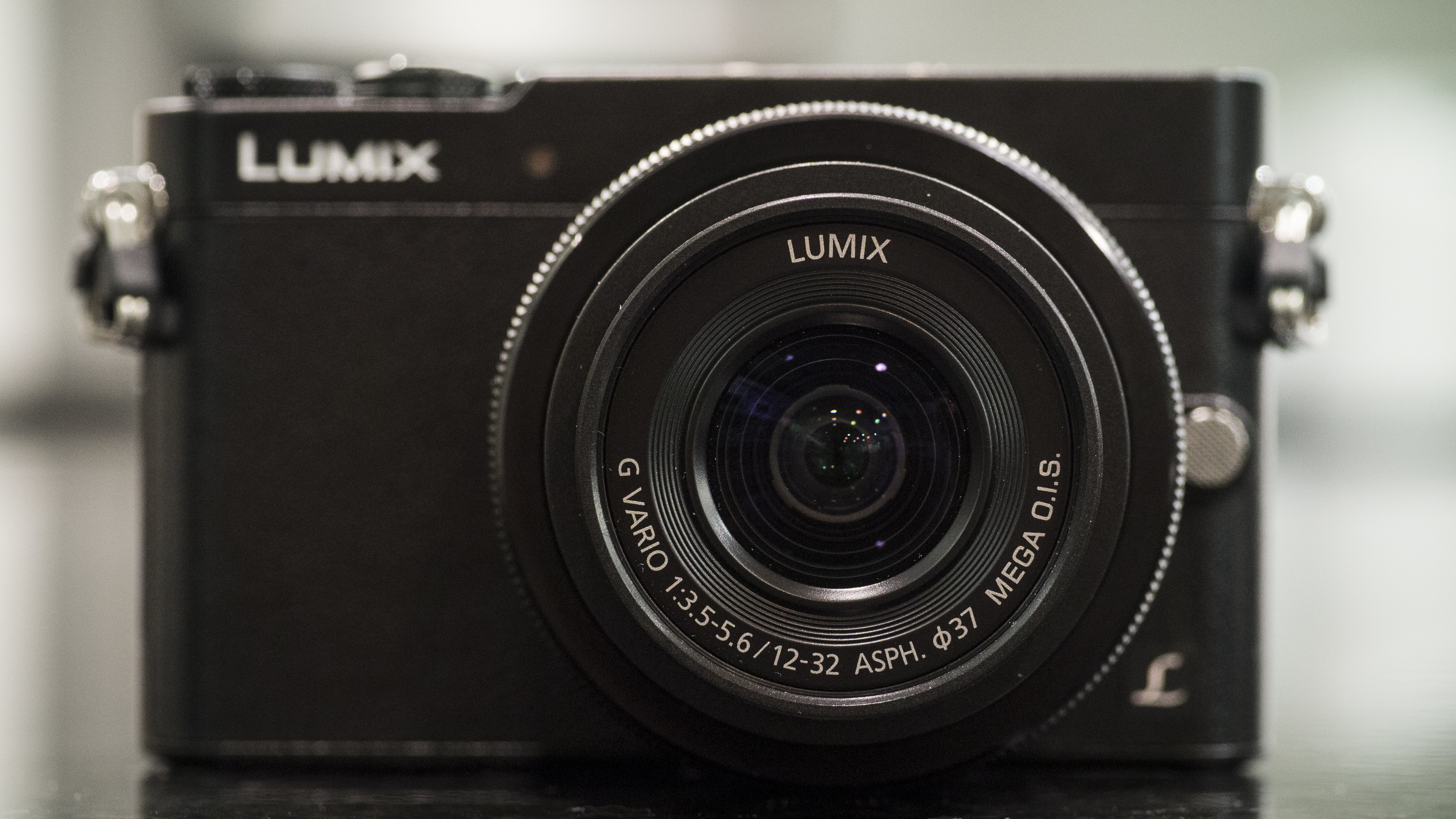Why you can trust TechRadar
When you first lay eyes on the GM5, it's hard to believe that it is a compact system camera at all and that the lens is detachable. Although it won't fit in a pocket in your jeans with the slim 12-32mm kit lens attached, it will certainly go in a coat pocket, which makes it a very appealing everyday walk around camera.
Although the GM5 is now a little bigger than the GM1 before it, it's still incredibly small for an interchangeable lens cameras, and the viewfinder doesn't do too much to add to that size, sitting neatly in the top left hand corner of the body.
Other than that, not too much has changed about the design and handling of the camera. If you're using the kit lens, you will need to extend the lens before you can shoot as it collapses down to save space. This makes it slightly slow when you're starting up for the first time, but you can always leave the lens extended if you plan on taking more shots a short while later.

As it has a touchscreen, Panasonic could have opted to omit dials and buttons, but happily there's a satisfying number of these too, making them complementary to each other.
On top of the camera, you'll find a dial for switching between various exposure modes, including semi-automatic (P/A/S) and manual modes (M). There's also Automatic, Creative, Scene, Video, Panorama and a slot for a set of custom settings – useful if you want to quickly access a particular group of settings, such as high sensitivity for low light shooting, say.
Also on the top plate you'll find the on/off switch and shutter release, along with a dial for choosing a focusing mode. You can choose between AF-S (single), AF-C (continuous) and manual. There's no lock on this dial, but it is reasonably stiff so it's not too likely you'll accidentally knock it out of position.

The back of the camera has seen a slight redesign from the GM1. There's a standard four-way navigational pad, with each directional key assigned to a specific function too, such as up for sensitivity (ISO) or right for white balance. There are also a couple of new customisable function buttons, found just next to the viewfinder. By default, these buttons control the viewfinder operation and the Wi-Fi operation, but you can set them to any one of a staggering 134 different functions. You'll find a further seven customisable function 'buttons' on the touchscreen itself; again these can be set to whichever function you find you use most often.
Whereas before a scrolling dial doubled up as the navigational pad and was used for altering lens aperture and shutter speed, there is now a dedicated dial just next to the thumb rest for changing these settings. You can push the dial in towards the body to switch between changing aperture/shutter speed and exposure compensation when in semi-automatic mode, or between aperture and shutter speed when in manual mode.
A button on the back of the camera opens a quick menu with common settings such as Photo Style and Image Quality and, like the customisable buttons, this menu can be changed to suit your specific needs.
To set the autofocus point, you simply tap the area on screen you want to use. Or, if you prefer buttons, you can press left on the navigation pad and then use the directional keys to move around to the point you need.

The EVF has an eye sensor which detects when the camera is lifted to the eye, switching the EVF on and the rear LCD off. This makes for a lovely seamless transition between using the two. The viewfinder is quite small, but the image itself is bright. It may not be something you'll want to use all the time, but it's handy to have at times when the sun is bright or it just feels more natural to use a viewfinder (such as when shooting portraits).
One handy feature which Panasonic has brought across from its other G series range is TouchPad AF. This is a setting which is activated via the main menu and allows you to continue to use the touchscreen to set the autofocus point even while using the EVF. You have to be careful of your nose touching the screen and accidentally changing AF point though.
Remote controlling the camera using the Image App is a great experience as Panasonic has afforded a high level of control; you can change white balance, sensitivity (ISO), metering, aperture, shutter speed, exposure compensation and more from within the app. You won't be able to zoom the lens in and out though, unless you have a power zoom optic.
Amy has been writing about cameras, photography and associated tech since 2009. Amy was once part of the photography testing team for Future Publishing working across TechRadar, Digital Camera, PhotoPlus, N Photo and Photography Week. For her photography, she has won awards and has been exhibited. She often partakes in unusual projects - including one intense year where she used a different camera every single day. Amy is currently the Features Editor at Amateur Photographer magazine, and in her increasingly little spare time works across a number of high-profile publications including Wired, Stuff, Digital Camera World, Expert Reviews, and just a little off-tangent, PetsRadar.

